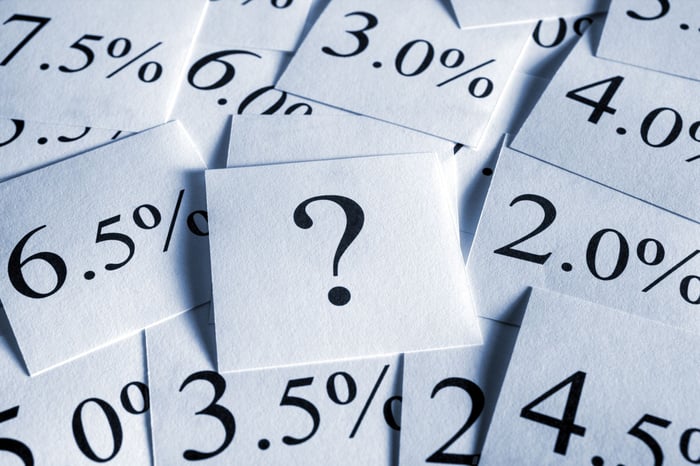Brookfield Renewable (BEPC -1.22%) is a unique clean energy investment with a generous 4.7% dividend yield. Compare that to the average utility's yield of around 3%, using Utilities Select SPDR ETF as a proxy, or the S&P 500's scant 1.3% yield. But before you jump on this high-yield renewable power stock, you'll want to understand these three facts.
1. Brookfield Renewable covers a lot of ground
Brookfield Renewable is a bit unusual in the clean energy space because of the diversity of the assets it owns. For starters, its portfolio includes solar (16% of production) and wind (21%), as you would expect. These are two of the fastest-growing sources of renewable power. But that's not where the story ends, as it would for many other clean energy stocks. Brookfield Renewable's portfolio also increasingly includes storage (9% of production). But the largest exposure by far is in hydroelectric power, which accounts for a whopping 47% of production.

Image source: Getty Images.
That hydroelectric exposure is worth highlighting because it is capable of providing baseload power, unlike solar and wind, which are intermittent sources. That creates a very strong foundation on which the company can grow the rest of its business.
On top of this power source diversification, Brookfield Renewable also has a very wide geographic reach. The largest exposure is in North America, which accounts for 61% of operations. After that comes South America at 18%, Europe at 17%, and Asia at 4%. So in one single investment, you are getting a massive amount of renewable energy diversification.
2. Brookfield Renewable is run like an asset manager
The next important thing to understand here is that Brookfield Renewable is managed by Brookfield Asset Management (BAM -0.96%). Brookfield Asset Management is a highly respected Canadian asset manager with a long history of owning and operating infrastructure assets. The first big takeaway here is that Brookfield Renewable isn't run like most other utility-oriented companies, which tend to own assets for a long time. Brookfield Renewable likes to buy when assets are cheap, run them and improve them over time to generate cash flow and increase their value. Then, if it can get a good price, it sells them. Then the process starts over again. Such an active approach shouldn't be shocking given the relationship with Brookfield Asset Management, but it is something to keep in mind as an investor.
But there's a second big takeaway from this relationship. Brookfield Renewable is really a way for investors to invest alongside Brookfield Asset Management. The two regularly partner on deals and Brookfield Renewable is simply a way for Brookfield Asset Management to tap into additional funding for its growth plans. That's not a bad thing, considering the generous yield. And there's a solid history of dividend growth here, too. So this is probably as close to a win-win as you can get on Wall Street. However, you need to understand the dynamics of this relationship or you could end up owning something that doesn't fit within your broader investment plans.
3. You can do better than Brookfield Renewable on the yield front
Throughout most of this article, Brookfield Renewable has been used as the name of the company. That's because Brookfield Renewable isn't the only way to invest in it. Here's the interesting thing about the Brookfield Asset Management relationship: It didn't start with Brookfield Renewable. Brookfield Renewable was spun off from Brookfield Renewable Partners (BEP -2.61%), which is the longer-lived entity. Brookfield Renewable Partners' distribution yield is 5.6%. The problem is that it comes with many of the complications of owning a partnership, including a K-1 statement come tax time.
The tax implications limit the appeal of Brookfield Renewable Partners to largely small investors. In order to gain access to larger investors that might not be allowed to own partnerships, like pension funds, Brookfield Asset Management created Brookfield Renewable. However, at the end of the day, both of the Brookfield Renewable options represent the exact same entity. The lower yield it offers is a function of the greater demand from institutional investors who can't invest in partnerships and individual investors that don't want to bother with partnerships. If the partnership structure isn't an issue for you, you'll probably want to consider the partnership option to collect the extra income.
A good renewable power option, but a complicated one
All told, Brookfield Renewable is a great way to get diversified exposure to the clean energy sector. Just go in knowing that it is an active manager with a close relationship to Brookfield Asset Management. And keep in mind that there are two ways to buy Brookfield Renewable: one that's easier to deal with come April 15 and one that could make up for the extra tax complications with a higher yield.





